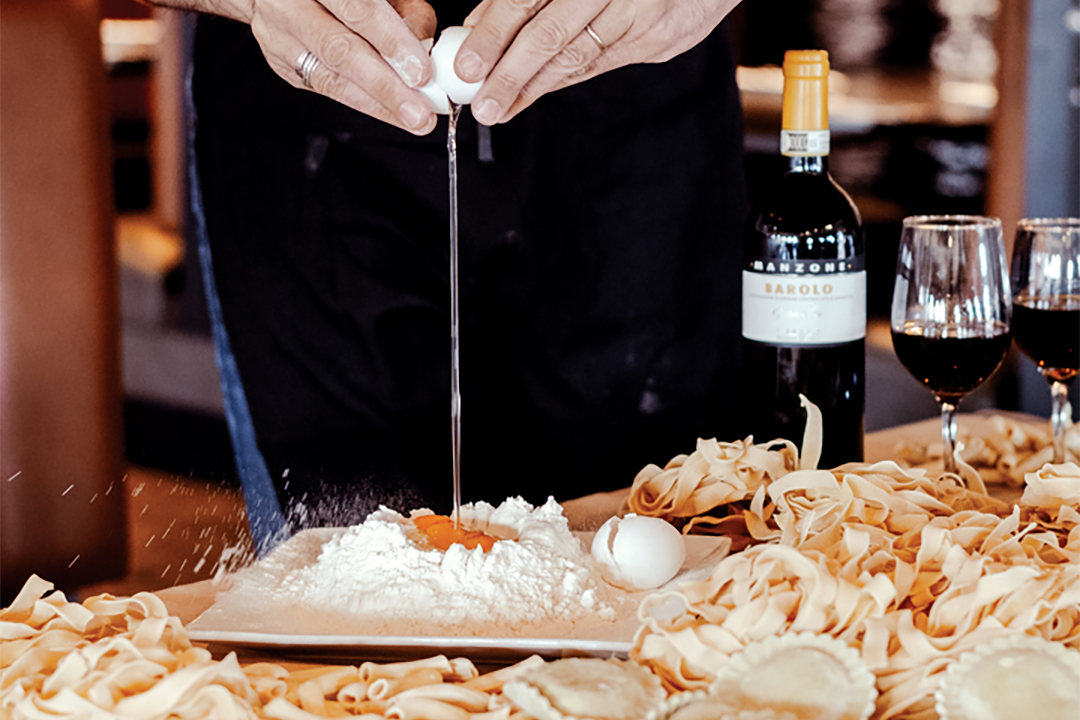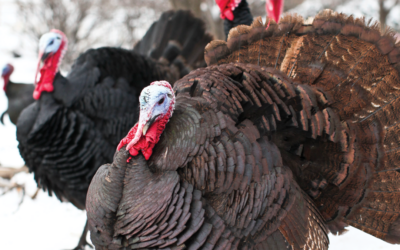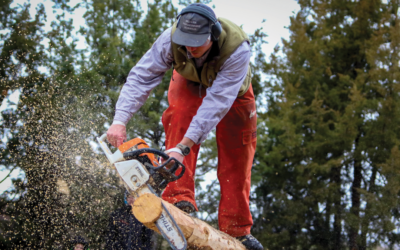Growing up in Vicenza, a northern Italian town near Venice, Giancarlo Scalzotto watched his mom, Emilia, make pasta by hand several times a week for their family. She made fettuccine, tagliatelle and thin capellini for brodo, a brothy soup. Then there were plump pockets of meat- or cheese-filled ravioli and tortellini, all closed by hand.
She began the nearly four-hour process by incorporating eggs into finely ground 00 (or doppio zero) flour to make a ball of dough—this specialty flour gives the pasta its unique, melt-in-your-mouth texture, Giancarlo says. Next, she kneaded it as you would a pastry crust and rolled it with a three-foot-long wooden pin until it reached the desired thinness and a slightly elastic texture. Finally, she rolled the dough into a tube, slicing it with a sharp knife into pale golden ribbons 12 inches long.
“You cut it from one end like cookies from a tube of cookie dough and hang the strands from the rolling pin to dry for a day,” Giancarlo says. “Making pasta isn’t difficult, but it takes time. That’s how you could say it’s difficult.”
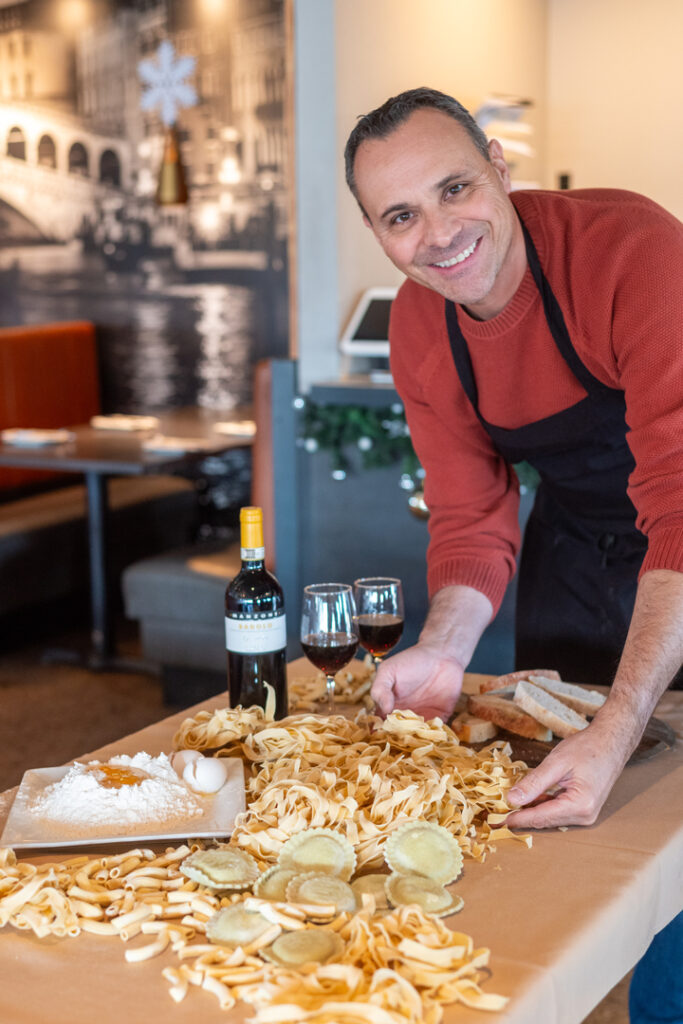
Giancarlo Scalzotto, owner of Scalzotto Italian Restuarant.
Over the years, Emilia transferred the task to Giancarlo, and he still uses her method today. He and his Colorado-born wife, Tonia, met in Denver and moved to Vicenza to live with his family for 13 years, where they learned more techniques and recipes before they moved back to Colorado in 2014 to open Scalzotto Italian Restaurant. They opened three locations: the first in Broomfield and the other two in Loveland and Westminster.
“We continued the tradition from the Old Country to the new country,” Giancarlo says, although their restaurants use a pasta machine due to the volume needed to serve customers. He still uses many traditional methods, including the fine 00 flour for its tender, chewy texture.
Homemade Italian pasta is thinner than boxed American pasta: Chewy but not sticky, its rougher texture lets the sauce cling to and coat each strand. Pasta-making is a tradition Tonia says is defined by pride, love and passion.
“My best memory is how [Emilia] put the pasta in cardboard boxes wrapped in paper towels. When people came over, they would bring a basket of eggs, a head of lettuce or something from their garden. Since [Emilia] didn’t have a garden, she gave them pasta,” Tonia says.
How to make a pound of homemade pasta
Making pasta is relatively simple once you know what to do, says Deb Traylor, a classically trained French chef who is also the culinary director at Ginger and Baker in Fort Collins. She oversees classes in the restaurant’s teaching kitchen and finds that problems happen for people if no one has walked them through how to troubleshoot issues that might come up.
“The dough can be too wet or too dry and you won’t know how to fix it, but it can be fixed,” Traylor says. “Taking a pasta class is the first step to getting the skill.”
Mostly, she says, don’t panic if your dough is too wet or too dry. It’s just dough; it can be moistened with a tablespoon of water or dried with more flour.
“If there’s flour and salt in the kitchen, you can make pasta in a snowstorm,” she says.
You’ll need a clean counter, rolling pin, fork, bench or dough scraper and a sharp knife. Alternatively, a pasta machine or a KitchenAid pasta attachment can be used to flatten the dough.
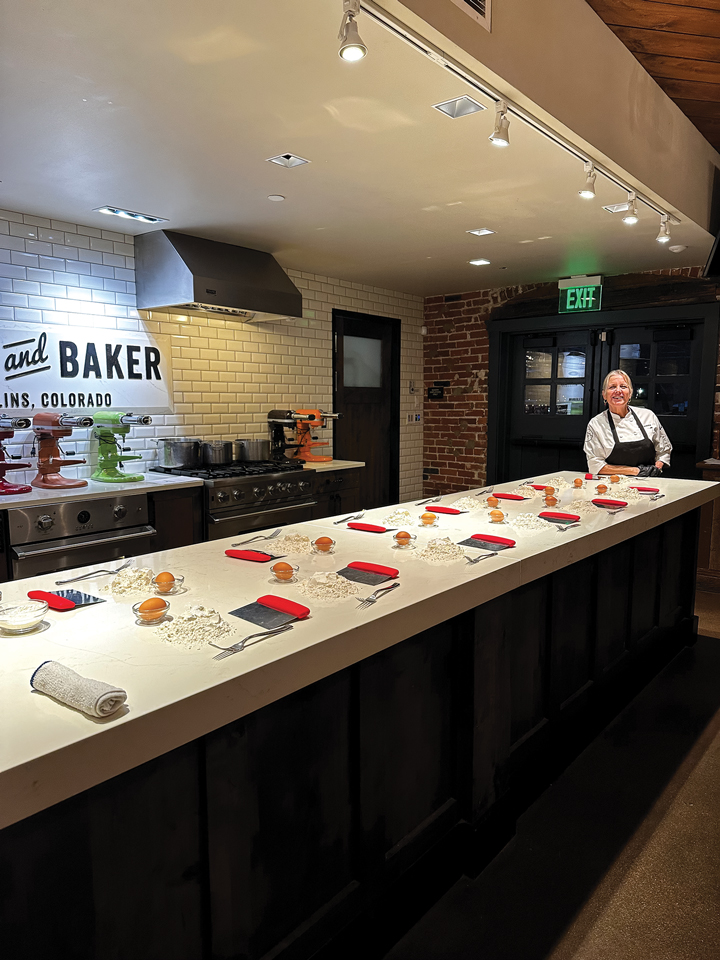
Chef Deb Traylor setting up for a private pasta class. Photo by Meg Hall.
Place two cups of flour and two teaspoons of salt in a mound, making a well in the middle with your hand or measuring cup. Add three eggs, then scoop the flour mixture into the eggs a little at a time with your hand or a fork, mixing as you go. Traylor says you may not need to incorporate all the flour.
Tonia recommends kneading the dough with the heel of your hand and dusting it with flour to prevent sticking until it forms a smooth texture and can be shaped into a ball.
“Kneading makes a gluten bond so that the pasta is chewier and has structure,” Traylor says.
Next, wrap the dough ball with plastic wrap or place it in a covered bowl to rest for 30-60 minutes at room temperature so that the gluten strands relax and the flour absorbs moisture from the egg whites. The dough will be about 10 percent wetter than before it was wrapped, Traylor says. You can also refrigerate the dough overnight if you don’t have time to finish the process.
Wrap the dough tightly to prevent air exposure since air oxidizes eggs and turns dough gray, Traylor says. If you don’t cook the pasta within a few hours, freeze and cook it within 24 hours, or shave the frozen dough to make dumplings.
After resting (or removing from the refrigerator), roll the dough with a pin or run it through the pasta machine’s aperture, which should be set to the largest distance between the two rollers (on a KitchenAid, the setting is 1; a hand-cranked machine is often set at 8, but machines vary). Fold the flattened dough in half, roll it out again and repeat, refolding it up to seven times. This technique, called lamination, allows rougher dough to smooth out to the desired thickness.
Lightly flour the dough and cut it into strips with a sharp knife or run it through a pasta cutter. Sprinkle it again with flour and stretch the strands across a sheet pan—or as the Scalzottos suggest, hang the strands from the rolling pin for a day to embrace the true Italian methodology. Cover any dough you aren’t cutting to prevent it from developing a dry, crusty skin.
Mangia!
Cook the fresh pasta in salted water without oil until it’s al dente—that’s crunchy, but not like a piece of bread, Giancarlo says. The Scalzottos cook fresh pasta for three-to-four minutes in their restaurants before serving.
Traylor recommends draining the pasta water and discarding it because of its salt content (though some recipes call for reserved pasta water to thicken a sauce). If the pasta becomes sticky, add two tablespoons of tap water to loosen the starch. Don’t add oil to your pasta because oil prevents sauce from coating it.
Personalize Your Pasta
Traylor’s pasta-making class doesn’t follow hard-and-fast rules, but she admits that Italian culture has certain standards. For example, the Scalzottos don’t salt the dough, but they do salt the cooking water.
“American pasta is often salted to enhance flavor; Italians salt by other means in the sauces or by adding anchovies, capers, olives or parmesan,” Traylor says.
Extruding shaped pasta through bronze dies, another Italian standard, gives traditional pasta its rougher texture and an ideal surface for sauces to cling to. Consider these other variations:
1. Use different flours for varying results. Traylor prefers all-purpose flour for its affordability and ease of sourcing, plus it produces a hardier egg noodle. Traditional 00 flour is finely ground, resulting in more tender noodles. Semolina is coarser and drier; it works well for non-egg vegan pastas and gives it a golden color, according to Carlo Pellegrini, who makes semolina pasta without eggs in his Greeley restaurant, Pellegrini Cucina Italiana.
2. Add protein with eggs. If only the yolks are used, the noodles will have a rich, silky texture, while using the whole egg makes them chewier. Without eggs, pasta is more fragile, but substitutions abound, including water. You can also create beautiful colors with puréed spinach, carrots, beets or turmeric powder; even wine can be used as an egg substitute. If you’re making stuffed pasta, eggs help it hold its shape.
3. Create textures with tools and your hands. Use an extruder attachment to make tubes and spirals with your dough. Traylor lets kids press their thumbs into thinly rolled dough that has been cut into little beads for a free-form shape.
Pasta Classes Around NOCO
The Teaching Kitchen at Ginger and Baker
359 Linden St., Fort Collins
gingerandbaker.com/the-teaching-kitchen
The Teaching Kitchen at Ginger and Baker offers chef-taught, hands-on classes to make pasta from scratch. Learn to make handmade pasta dough, linguine, fettuccine, ravioli and more. Then, enjoy your meal in the teaching kitchen.
$95 per person
Olive & Herb
5865 Sky Pond Dr., G168, Loveland
7008 W. 10th St., Ste. 200, Greeley
Learn how to make pasta from scratch to take and cook at home. The interactive class uses a basic recipe and teaches foundational techniques.
$55 per person
The Cooking Studio
123 N. College Ave., Ste. 130, Fort Collins
Parent-child classes for Italian cooking include how to make ricotta gnocchi. The Date Night: Italy class lets couples try their hand at preparing sausage ragu with hand-rolled pasta. A culinary skills series also includes pasta-making.
$74-96 per person
The Bottled Olive Pantry
1550 Main St., Ste. 130, Windsor
Make hand-rolled ravioli with chef Troy Heller (of Heller’s Kitchen), and savor your success by enjoying a four-course meal you prepared. You can also participate in a demonstration-style lesson that includes a generous tasting portion of four-to-five courses and instruction on how to pair the shop’s olive oils, vinegars and gourmet spices to enhance your home cooking.
$60-75 per person
Farm Fusion in the Kitchen
2627 Cattlemans Rd., Fort Collins
Enjoy a date night filled with Italian romance and opportunities to learn how to roll fresh pasta and prepare lobster ravioli.
$95 per person
Journey Culinary
706 Kimbark St., Longmont
3journeyculinary.com/class-calendar
Learn the art of making pasta from scratch using a classic egg-based dough.
$99 per person


